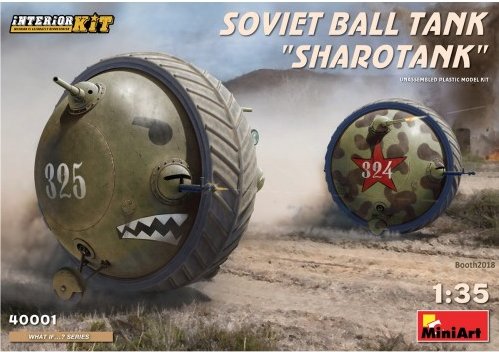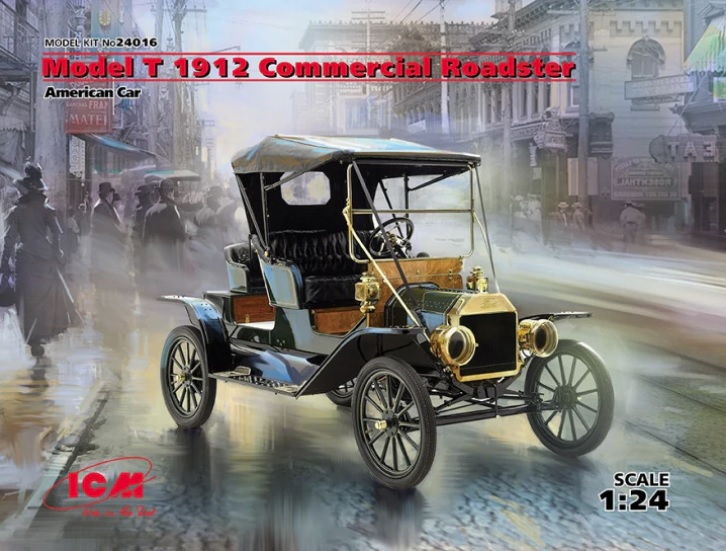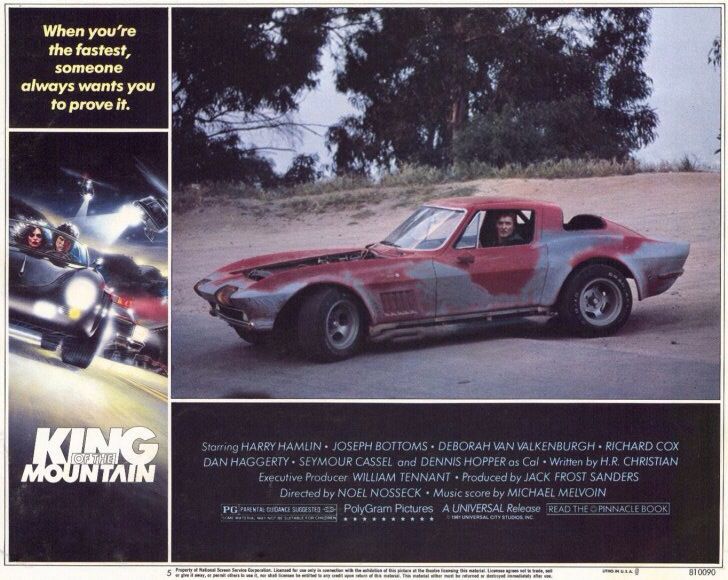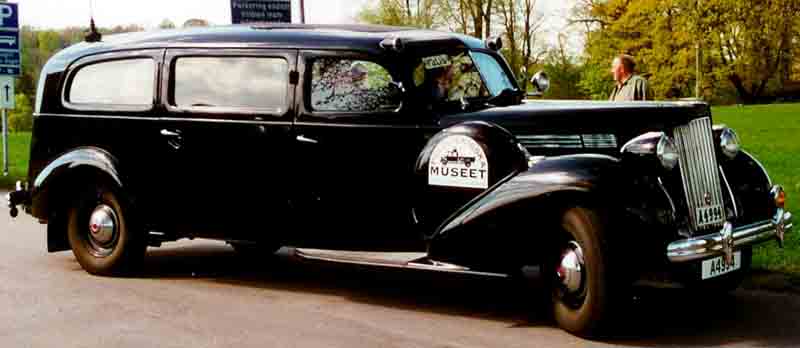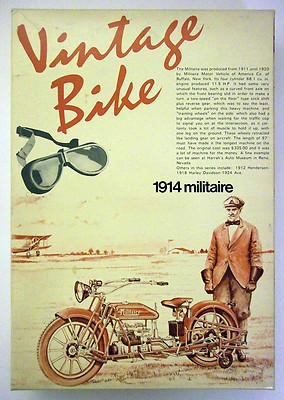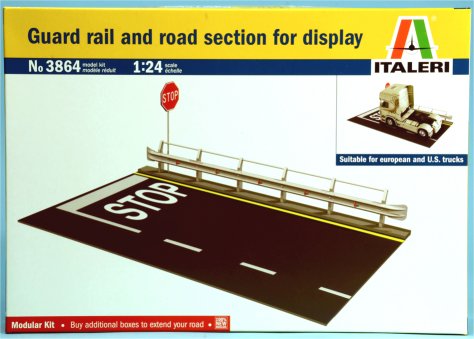
Mike999
Members-
Posts
3,007 -
Joined
-
Last visited
Content Type
Profiles
Forums
Events
Gallery
Everything posted by Mike999
-
Some talk on car movies.
Mike999 replied to Greg Myers's topic in General Automotive Talk (Trucks and Cars)
Movie "location goofs" are fun. On TCM, I recently saw the 1952 film noir "Kansas City Confidential." It's pretty good, but not a single frame of it was shot anywhere near Kansas City. It opens on a long aerial shot of downtown Los Angeles, including City Hall. Even in 1952, L.A.'s City Hall was one of the most recognizable buildings in America because it starred in a lot of movies. That was probably stock footage, so you'd think they could have found some footage of the real K.C. Ed Wood probably had some in his library. Also, scenes taking place in the exotic Mexican town of "Borados" were shot on Catalina Island. But the scenes filmed in Tijuana, Mexico really were shot there, believe it or not. -
I need a Ford on the shelf
Mike999 replied to NOBLNG's topic in General Automotive Talk (Trucks and Cars)
Here's a 2015 thread about the '69 Cougar. Make a pot of coffee, you'll be reading for a while... -
What non-auto model did you get today?
Mike999 replied to chunkypeanutbutter's topic in The Off-Topic Lounge
Along with some on-topic car kits, today the fe-mail carrier also dropped off this monster: the MiniArt 1/35 scale "Sharotank," or Ball Tank. One of the coolest tanks never built! With 4 large-caliber cannons, 8 machine guns and 2 anti-aircraft guns. And the kit has a full interior. MiniArt also does this one with U.S., Australian and German markings. -
Thanks! I have 2 of those service body trucks coming in the mail, so I appreciate the sneak peek. Today the fe-mail carrier dropped off 2 more Revell Porsche Diesel Jr. tractors. Interesting: the first one of those I ordered came in Revell's flat "European" style box. The 2 that arrived today were in the regular "American" style kit box, smaller and deeper. Also in this load, the ICM 1912 Model T Commercial Roadster with nifty box art. Not sure what makes it "commercial." It's basically a roadster with a "mother-in-law seat" on the back. I have Weird Plans for it. Building the ICM Model T Speedster taught me some lessons about these kits, most of them painful. So now I know what to watch out for. I hope...
- 39,081 replies
-
- johan
- glue bombs
-
(and 1 more)
Tagged with:
-
Some talk on car movies.
Mike999 replied to Greg Myers's topic in General Automotive Talk (Trucks and Cars)
"King of the Mountain" from 1981 recently turned up on a cable movie channel. The voices in my head forced me to watch it (again). I did fast-forward thru some of the romantic goop and the boring subplot about the recording industry. Despite all the Porsches and other exotic machinery, the car that really impressed me was Dennis Hopper's grungy '67 Corvette coupe. Missing its hood and rear window and painted in patchwork gray primer over Weathered Red. With those side exhausts that seemed to be in every MPC model kit during the 1970s-80s. Here's a great build of Hopper's Vette from The Other Magazine Board: http://cs.scaleautomag.com/sca/modeling_subjects/f/30/t/116467.aspx -
Here's something else I learned. Hopefully I can explain it without too much confusion. If you've studied the instructions, you know that the exhaust manifold/pipe/muffler are installed very late in building - after the engine is in the chassis. After that, you have to glue on 4 tiny "wing nuts" that hold the exhaust manifold to the engine. You almost have to stand on your head to do this, and there isn't much space to work between the front fender and the firewall. The locator holes for those 4 nuts are just shallow dimples in the engine block. With the engine painted black, they are nearly impossible to see. So before installing the engine, I drilled out the four "dimples" for the wing nuts, exposing the original gray plastic. After attaching the exhaust manifold, I carefully glued in each wing nut using tweezers. Because of the drilled holes, the wing nuts stayed in place. I was pretty sure they'd be falling out if I hadn't drilled those holes. Speaking of holes...you probably noticed that the end of the exhaust pipe is molded solid. It could be drilled out, but it's pretty small and I always seem to goof when drilling small holes. I cut the exhaust pipe to a short stub, filed it down thinner, and slipped a piece of plastic tube over it. That gave a nice open exhaust pipe, with just a few minutes work.
-
What a great haul! Careful it doesn't create some kind of Mediocrity Singularity and suck you into a black hole. Oh wait, too late...
-
I had to go back thru my "Stuff I Bought" list to find the Speedster. The price was $19.95 at Freetime Hobbies during one of their sales. But that was over a year ago. Freetime is now showing it as "out of stock." Their regular price for that kit was $25.79. HobbyLinc has it in stock for $23.12. You're right about the tail-light. I just found a photo of a 1913 light, showing the clear lens. I believe the instructions told me to paint both lenses blue. Oh well, easily fixed. I'll just pop off the blue lens with a hobby knife and replace it with an unpainted gemstone. They're a reflective chrome which should pass for clear. Or paint it white.
-
Glad it helped. All that brass "bling" is no problem with the ICM '13 Speedster kit. It doesn't have any plated parts. The "brass" sprue is the same gray plastic as the rest of the kit. The Speedster seems to be discounted more than the other ICM T's, for some reason. I've seen them as low as $19.99, which is a great deal. That kit has a nice oval gas tank with "Ford" script, a "monocle" windscreen, and other parts that could be used on Model T hot rods. Here's a trick I used for the complicated tail-light. It's brass, with a round blue lens on each side and a red lens in the middle. I did not want to try hand-painting those lenses. Michael's and Hobby Lobby sell tiny, round self-adhesive gemstones. I painted 3 of those with Tamiya Clear Blue and Clear Red, painted the whole tail-light brass, then stuck the lenses on. It worked great.
-
Here's a link to a build article on the ICM 1913 Model T, at the IPMS website. The author knows a lot about real Model T's and I found it very helpful when I was working on the ICM '13 Speedster. That project is currently "on hold." Not because of anything wrong with the kit, just my own goofs and mods I wanted to add. One of the trickiest parts I found: because of the assembly sequence, that beautiful brass radiator has to be painted BEFORE attaching it to the front axle, then attaching that assembly to the fenders/frame. The very fragile headlight brackets also have to be painted brass and ICM would have us attach them pretty early. Better to put them on after everything else is done. Like many parts on this kit, those headlight brackets are only attached by a butt-joint with a very small gluing surface. And they're almost too small to do the drill-and-pin-with-wire trick. The best fix for this might be a Five-Minute Epoxy. Overall it's a fun kit, and nicely detailed. https://web.ipmsusa3.org/content/1913-ford-model-t-roadster
-
This paddy wagon could take you to jail in style! Or maybe it wasn't a paddy wagon, but a vehicle for hauling the Riot Squad and all its gear. Or maybe the 1939 version of a SWAT team... It's a 1939 Packard One-Twenty Police, built on the long wheelbase commercial chassis also used for hearses and ambulances. I found the pic on Wikipedia and haven't found out much about the real cars. I have a book on the Henney Motor Company, which built most of the Packard commercial vehicle conversions. A quick glance didn't turn up any special police versions, just limos, hearses and ambulances. I'm wondering if the owner might have just built his own phantom "police" version out of an ambulance. Notice all the police equipment: big spotlight on the driver side, amber light on the front bumper, small lights on the roof. And what appears to be a radio antenna mount on the back of the roof.
-
Ghost of dragstrip hollow
Mike999 replied to Spruslayer's topic in General Automotive Talk (Trucks and Cars)
Thanks, I love this kind of movie car-cheology. Here's one of my favorite AIP stars: a blue Dodge Seneca 2-door sedan. Along with a more famous Barris Mopar, in 1966 it debuted in "Fireball 500" painted solid blue. In 1967 it appeared in "Thunder Alley" posing as a stock-car racer, with the rocker panels painted gold and a racing number. -
Beach Boys Song. Shut Down Dodge Dart
Mike999 replied to stavanzer's topic in General Automotive Talk (Trucks and Cars)
Yep, that "brand new shiny red Super Stock Dodge" was driven by Jan & Dean's "Little Old Lady From Pasadena." Many years ago, some great modeler built a diorama inspired by that song. IIRC, the Dodge was backed into a "rickety old garage" full of clutter. Including a scratch-built washing machine. If anybody remembers who built that, please jog my memory. -
It does look great in blue, good job. I like this kit so much I just ordered 2 more. They're on sale for $15.92 at HobbyLinc. I needed some paint and other stuff, so that was a good excuse. I'm already working on one as a red "beater." Might build one in shiny blue, and use the other for parts and other projects. Somebody else suggested that nose/hood might look good on a hot rod. And the tires/wheels might work on a Model T "Doodlebug" tractor.
-
Here's a fun article about firing up and driving a sort of "barn find" 1960 Porsche Junior tractor. Lots of history and photos. https://jalopnik.com/i-finally-got-to-drive-a-real-porsche-1797161520
-
Here's a pic of the kit contents (swiped from the internet). Also a review/buildup of the Aardvark Center Door Sedan by Anthony Hazelaar, who has built just about every Model T ever made. Quite a few years ago, I ordered the 1915 Center Door Sedan and the Model T Coupelet kits from Andy. Both are very well done, with minimal flash and clean-up needed. https://www.drivehq.com/file/df.aspx/publish/tonhazelaar/wwwhome/15t-centerdoor.html
-
I wondered that too. Here's one answer I found: "The small tractors weren’t terribly popular in the United States. They didn’t have enough horsepower for the market, and the exchange rate made them quite expensive. About 1,000 of these were exported to the United States." https://octanepress.com/content/1960-porsche-junior I opened up this kit on Tues. of this week and started building, after another long project bogged down. As everyone else said, it's a super little kit and a really fun build. It has optional front axles (with or without fenders); optional seats (padded or not); and optional bench seat/grab bars for the fenders. An online search turned up many pictures of these tractors, with different configurations of the optional parts. The only change I'm making is the battery. The one provided looks like a very modern 12-volt battery, with a digital read-out and such. Though I could be wrong about that. Anyway, I'm swapping it for a more old-school battery from the parts box.
-
Found this on eBay for a fairly reasonable price. The 1914 Militaire was a combination of car and motorcycle. It had a 4-cylinder engine, wooden spoked wheels and 2 "helper" wheels that could be lowered by a pedal as the rider stopped. It was marketed to rich people who already owned a big car as a secondary vehicle for running around town. As the name implies, the company also hoped to sell these to the U.S. military. A few were tested in Europe during WWI, but at nearly 800 pounds, were way too heavy and cumbersome to get thru muddy battlefields. Not to mention that shift lever right in front of the seat, just waiting to impale the careless rider. https://www.motorcycleclassics.com/classic-american-motorcycles/1914-militaire-zm0z19mazhur
- 39,081 replies
-
- johan
- glue bombs
-
(and 1 more)
Tagged with:
-
MRC made 2 complete 1/24 scale gas stations some years ago. One was a Texaco station, the other a generic "Joe's" station. They came with 2 vintage gas pumps, oil cans and lots of other accessories. The Texaco version will probably never be re-issued due to licensing issues, but I'm just guessing about that. No problem if you have your own Texaco decals. The "Joe's" version has been re-issued by Academy. Several are up on eBay right now. It's Academy kit number 15122. Prices seem to be in the range of $50-75 from sane sellers. Which is not too bad, considering all you get in the box. Marx made several different service stations, and I think some were 1/25 scale or close. The real prize in toy service stations is the 1/25 scale Texaco station released at Christmas of 1960 and made by Buddy-L. Many years ago, The Other Magazine ran an article with an incredible diorama built around that station. It featured several Jo-Han cars converted into station wagons. I remember a '56 Pontiac and '58 Olds. EDIT: Model Roundup has the Joe's station in stock now, for $79.90. Their listing has more pix of it: https://www.modelroundup.com/product-p/mrc-academy-5122.htm
-
Last HobbyLinc order came in. It's almost my birthday, so that's my excuse: Revell Porsche Junior 108 farm tractor Round 2 "Mod Rod" '29 Ford Round 2 '60 Chevy Fleetside pickup with Go-kart Italeri 1/24 scale Guard Rail & Road Section; more than 1 of these can be linked together to make a longer road.
- 39,081 replies
-
- johan
- glue bombs
-
(and 1 more)
Tagged with:
-
You should get lots of answers from us geezers about that! The "metal bit with holes" is probably a simple U-shaped bracket, like the one shown below. Some of these brackets had holes all the way around, some didn't. Two screws thru the side of the CB player held it into the bracket. The bracket itself was mounted flush/straight against the bottom of the dashboard with a couple of other screws. The angle of the CB player could be adjusted by fiddling with the 2 mounting screws on its sides. Some people also mounted the bracket upside down, on the transmission hump. Which sort of looks like your first picture.
-
Airfix Aston Martin DB6 - classic kit whats in the box
Mike999 replied to djflyer's topic in Car Kit News & Reviews
I remember those. The "customizing" aircraft kits with chrome parts were just goofy. But I liked some of those "3-in-1" Profile kits. Like the A-26 Invader with 3 different markings, and parts to build either a glass-nose or gun-nose version. I saw one of those for $5.00 at a kit swap meet and grabbed it. This was after the modern and much better Italeri 1/72 scale Invader came out. The Airfix Mad Rivet Maker really went to town on that kit, and it's notorious for fit...issues. But the nostalgia factor alone made it worth 5 bucks. And from the Box Art Hall of Fame...the British model company FROG released a few AMT kits in its home market. Note that Daytona is a dirt track, and the Galaxie appears to be racing with a black vinyl top. -
Wandering off-topic, as usual. Not to be too...picky or take anything away from the great Marty Robbins. But the guitar picker on his records was usually the awesome Nashville session guitarist Grady Martin. He had a long career and recorded with hundreds of artists, from Elvis Presley to Loretta Lynn. Martin may have accidentally invented the fuzz guitar on Marty Robbins' 1960 hit "Don't Worry." There are several different stories about how that happened, but most likely Martin ran his guitar thru a bad channel in the mixing board. He thought it sounded awful and wanted to re-record the lead guitar part. But lucky for us, Marty Robbins over-ruled him. That's also Martin doing the unforgettable guitar work on "El Paso." That record was produced by Don Law, and music fans owe him a huge debt. While he was working for Brunswick Records in 1936-37, Law made the only existing recordings of the African-American blues genius Robert Johnson. Johnson has influenced just about everybody who ever picked up a guitar, including Eric Clapton, Keith Richards and Jimmy Page.
